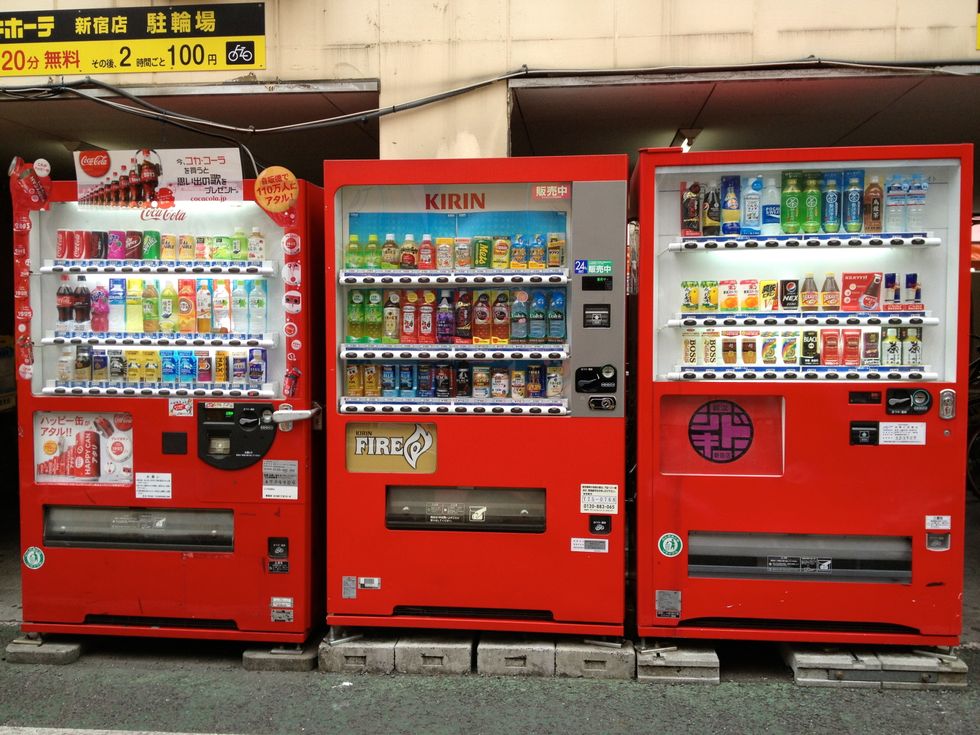In the land of advanced technology, robots can be more ubiquitous than people. Vending machines are one such robot that has made a huge difference economically, socially, and politically in Japan. Tokyo, the capital of Japan has a population exceeding 20 million people and a land mass less than the city of New York City.
A booming and cosmopolitan city filled with a plethora of unique activities and sights, buzzy restaurants, interesting and stylish stores, as well as innovative technology centers. However, one thing Tokyo lacks is a large population of unskilled laborers and young people to fill service-oriented jobs that are vital to any developed economy.
Due to the enormous living in the city, most Tokyo residents have high-skilled labor jobs and contribute to the economy in more advanced and complex ways. Thereby, leaving little room for unskilled labor to survive in the city.
Enter the invention of vending machines, a somewhat intriguing and simple machine that stores and dispenses goods by the push of a few buttons and the insertion of a bill or coin. Vending machines have been around for over 25 years, yet have accumulated the most loyal following in Japan due to the country’s now clear dependence on them.
The setting for vending machines to thrive was many years in the making due to Japan’s low fertility and birth rates which have caused a population crisis. There are simply not enough young people in the country, some leave for employment elsewhere due to the high cost of living in the cities, and those that stay are not interested in working in unskilled labor.
Coupled with containing the oldest living group of people in the world and a growing elderly population, unskilled labor services has become extremely important. Japan had to think fast on how to solve this issue, they were not able to attract immigrants from abroad since the culture in Japan is quite homogenous so they turned to machines and robots.
The vending machine has been a complete win-win in a variety of realms. First, it takes up very little space and therefore cost’s much less than maintaining a large superstore as we would in America and they offer more convenience as many can be placed in various densely populated locations around the city.
Second, they require no people to manage and maintain the vending machines, other than the restocking of the goods inside there is no heavy costs placed on maintenance, salaries, bonuses, overtime, and employee health services among other costs. Yet, these vending machines are not like the ones in America they contain much more and essentially are a restaurant and grocery store all wrapped up into one ergonomically designed and minimalistic package.
Vending machines are used billions of time per year in Japan, with each transaction acting as a step for improving the population crisis and a reminder of the technological advancements that have been made in the world. The government has even mandated that vending machines are only allowed to accept coins which psychologically aids in their popularity.
Many Japanese residents dislike carrying around heavier metal coins throughout the day and feel relieved and happy to get rid of the heavy change for a delicious snack, hot meal, cool beverage, or a fresh supply of groceries.
Instead of having to drive to a store or take public transport to a super center, a resident can just as easily walk down the street or descend the stairs in the building and apartment and load up on whatever he needs in a few minutes, he doesn’t have to spend time scanning through aisles and aisles of different options, but can rather clearly see what he wants through the screen or user-interface on the machine.
In Japan, the vending machine craze is less about the fascination behind this magic rectangular box that gives you what you want and is rather based on a cultural notion of efficiency and need. When you visit there, appreciate the practicality of being able to get whatever you want on every street you walk on whenever you want.









































